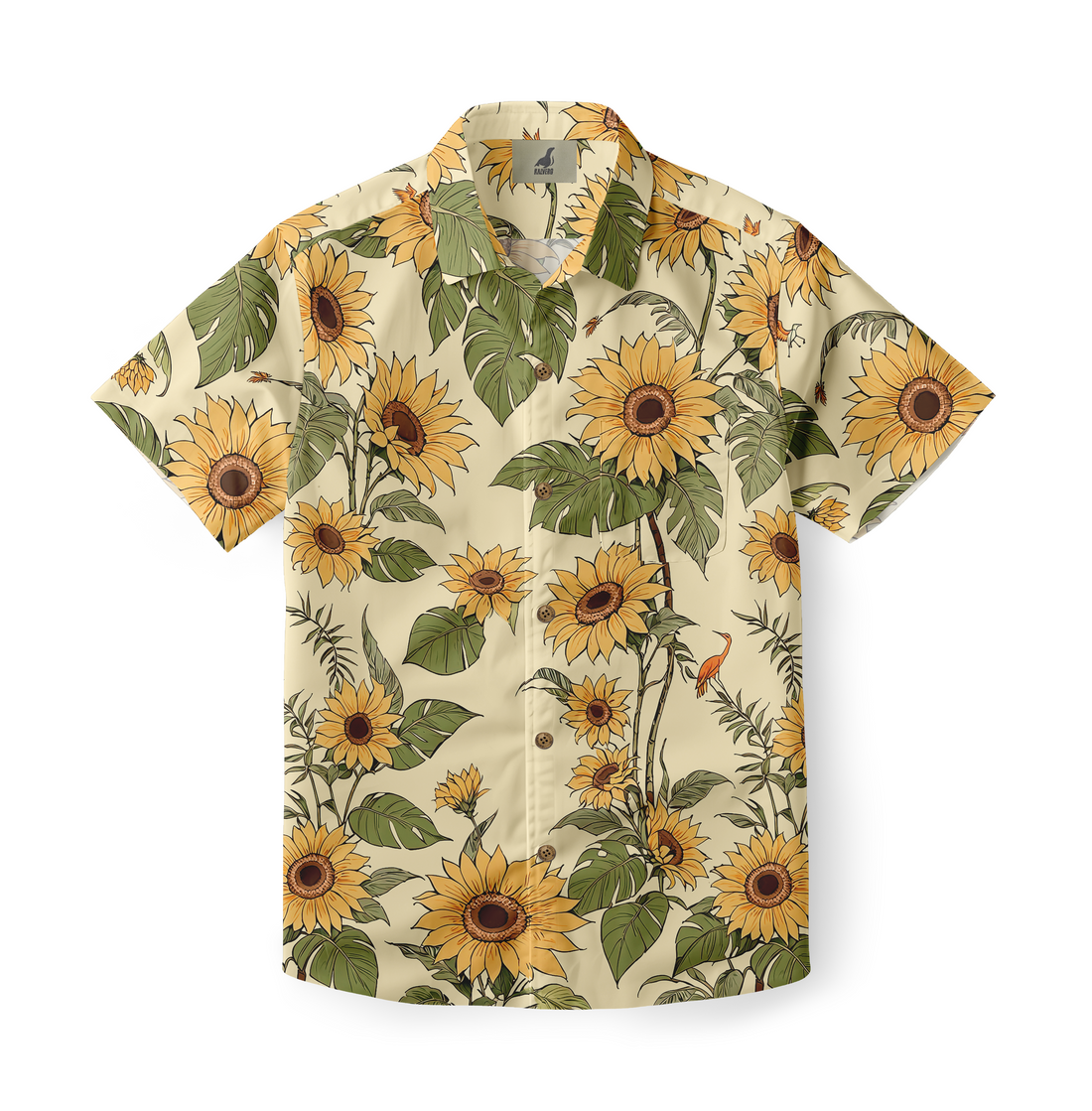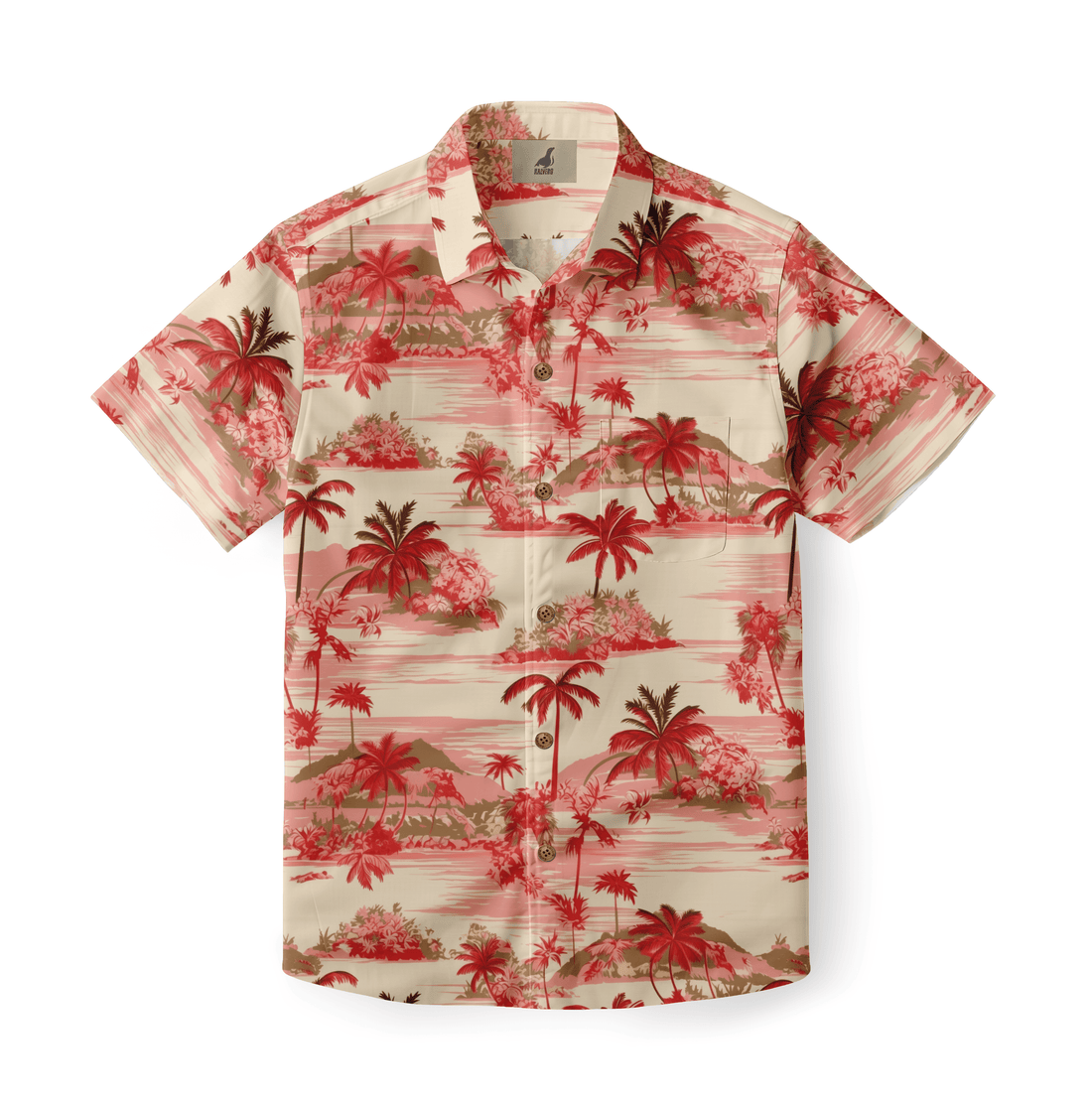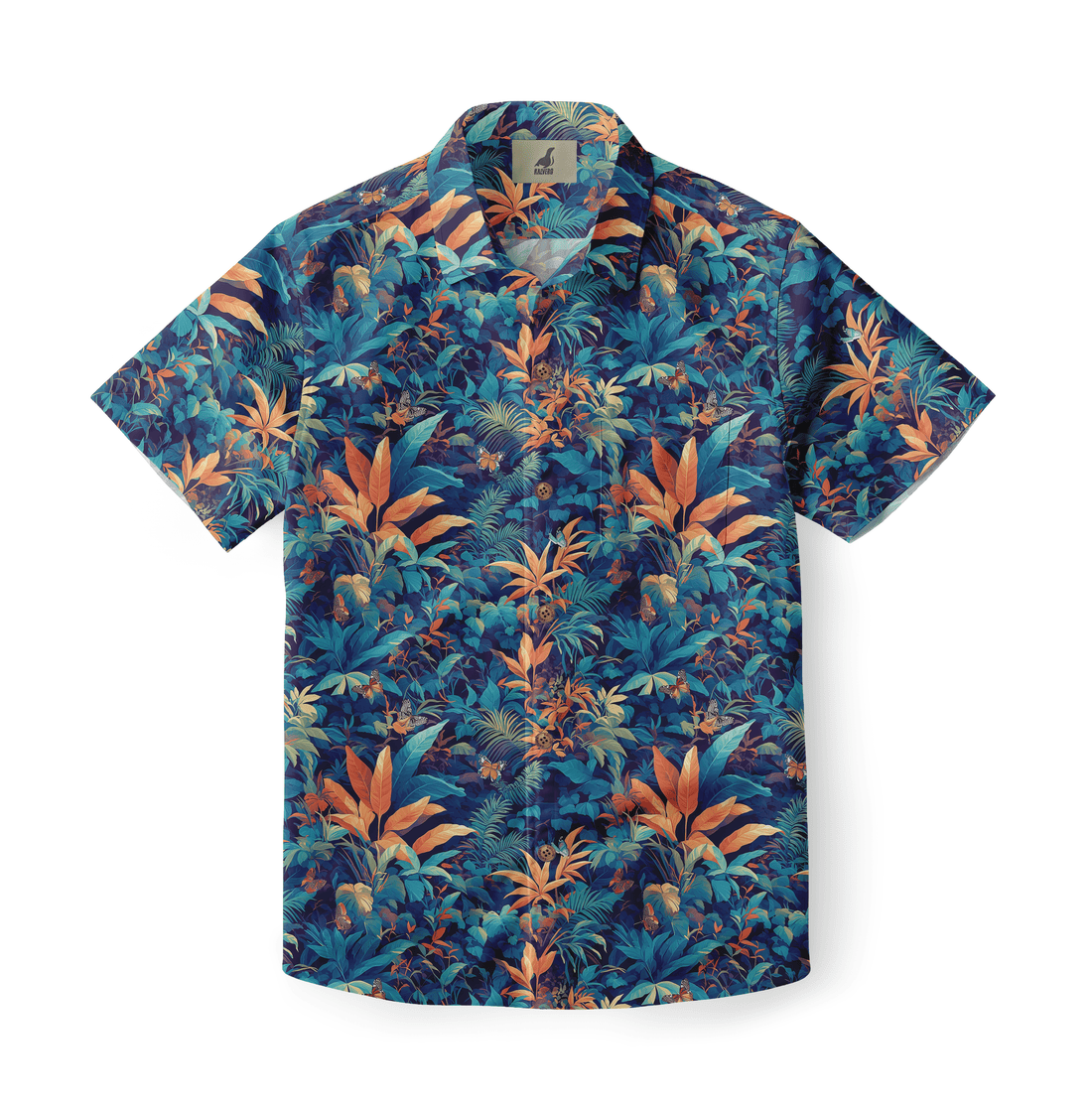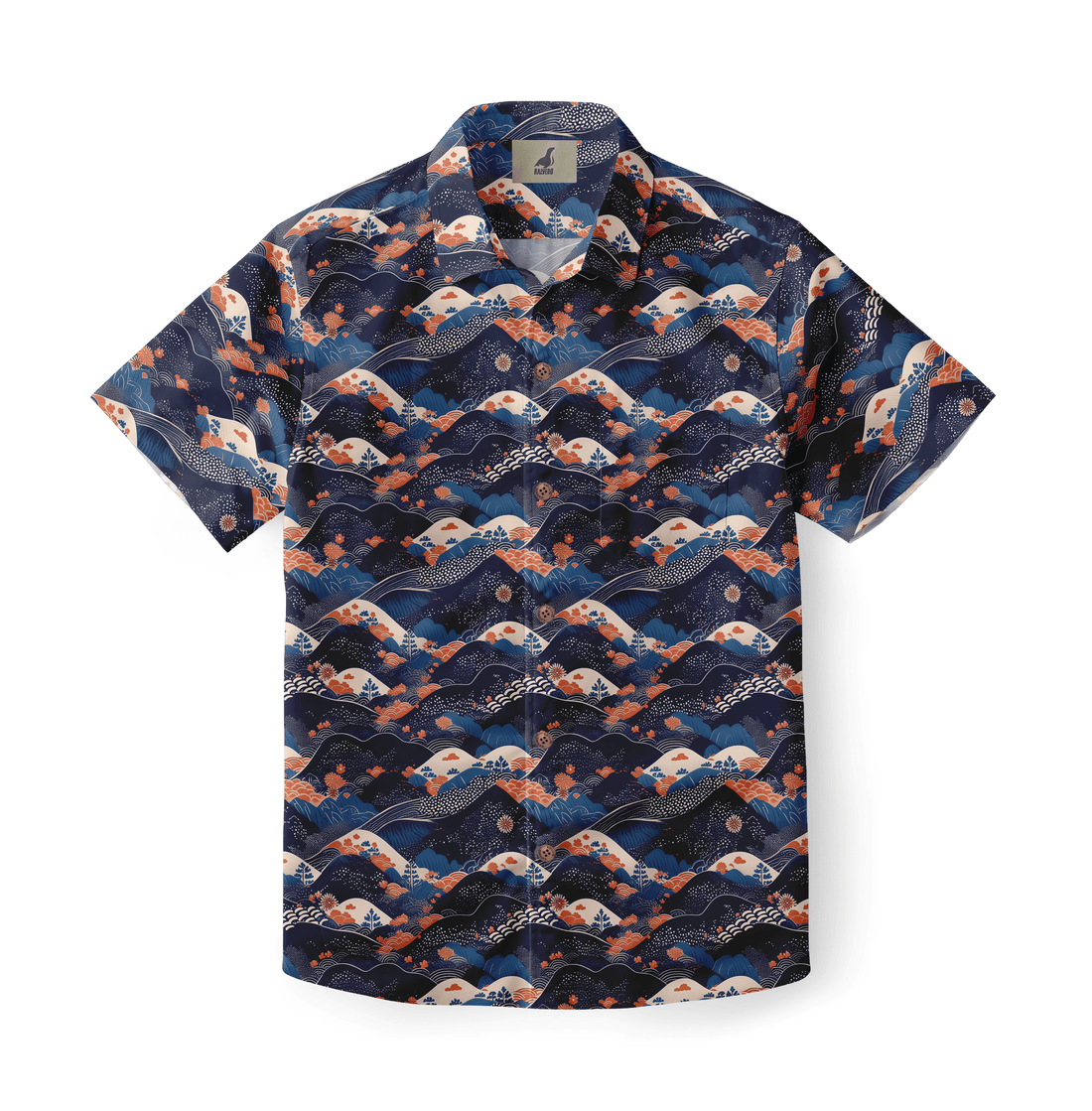Hawaiian Shirts in Streetwear Fashion bridge island heritage and urban attitude in modern wardrobes. The phrase anchors how bold florals meet street silhouettes and cultural remixing. Designers adapt traditional aloha motifs to oversized cuts, layered looks, and skate culture references. Consumers respond to tactile comfort and graphic immediacy when selecting pieces. Retailers stock varied weights and finishes to suit seasonal transitions. Photographers and stylists often juxtapose tropical prints against concrete backdrops to highlight contrast. Cultural custodians caution about respectful usage of island symbols. Fashion professionals who source pieces balance authenticity, trend signals, and market demand. Over time, Hawaiian Shirts in Streetwear Fashion evolved from novelty into a recurring category with stylistic depth.
Hawaiian Shirts in Streetwear Fashion: Origins and Cultural Migration
Hawaiian Shirts in Streetwear Fashion owe much to transpacific exchanges and media circulation. Early aloha shirts mixed native motifs with trade textiles and postwar tourist markets. Streetwear appropriation began when subcultures repurposed leisure wear as identity markers. Skate and surf scenes adopted bright prints for visibility and irony. Social media amplified hybrid looks, fast-tracking global adoption. Designers and brands reinterpreted prints through tech fabrics and exaggerated proportions. Local makers and heritage ateliers supplied base references that major houses reimagined. Critics debate the boundary between homage and commodification. Responsible styling acknowledges origin stories while adapting silhouettes for urban movement and weather conditions.
Hawaiian Shirts in Streetwear Fashion: Materiality, Cut, and Print Techniques
Hawaiian Shirts in Streetwear Fashion often vary by fabric choice and print method to suit urban demands. Lightweight rayon keeps drape while retaining vibrant dye depth. Cotton blends offer structure for layered outfits in cooler cities. Digital printing ensures repeat fidelity and fast sampling for capsule drops. Screen printing yields tactile surface texture that ages uniquely. Cut choices range from boxy, oversized fits to cropped, tailored shapes for high fashion crossovers. Seam placement and pocket design affect how motifs read across the chest area. Stitch reinforcement at stress points prevents distortion when garments are styled with heavy outerwear or layered pieces. Quality construction supports longevity in street rotations.
Hawaiian Shirts in Streetwear Fashion: Styling, Layering, and Seasonality
Hawaiian Shirts in Streetwear Fashion thrive through layered looks and season-aware styling choices. Pair an oversized aloha shirt with a boxy hoodie for contrast and depth. Tuck a lightweight print into high-waist trousers to balance proportions for smarter looks. Add a technical shell when rain threatens, preserving print visibility without sacrificing function. Rotate shirts under blazers for evening events where formality is relaxed. Accessorize with minimalist caps or chain necklaces to maintain urban edge. Footwear choices, from chunky sneakers to loafers, shift the outfit tone quickly. Seasonal palettes move from saturated summer prints to muted autumnal reinterpretations for extended shelf life.
Hawaiian Shirts in Streetwear Fashion: Community, Subculture, and Identity
Hawaiian Shirts in Streetwear Fashion reflect diverse motivations across communities and subcultures. Some adopters seek ironic detachment, while others emphasize cultural nostalgia or island solidarity. Street communities often remix aloha shirts with workwear staples to signal hybrid identity. Influencers create microtrends by pairing vintage pieces with contemporary silhouettes. Small labels activate local makers, creating limited runs that appeal to collectors. Fans curate archives of rare prints and collaborate on swaps and pop-up events. Brands that engage with these communities foster credibility and reduce backlash. Thoughtful collaborations center maker stories and provide economic benefits to origin regions when handled respectfully.
Key Streetwear Styling Moves
-
Layer a bold Hawaiian shirt over a neutral hoodie for contrast.
-
Tuck half the hem for relaxed, deliberate asymmetry.
-
Pair with tailored trousers and minimal sneakers for smart-casual balance.
-
Use tonal accessories to anchor loud prints visually.
-
Rotate color saturation seasonally to extend product lifecycle.
Key Streetwear Styling Moves Explained
These five moves convert island prints into city-ready statements without losing their essence. Layering over neutral bases preserves the motif while adding depth and insulation. The half-tuck trick signals intentional, lived-in styling that reads well in candid street photos. Pairing bold tops with simple trousers reduces pattern fatigue in group settings. Tonal accessories tether bright prints to the broader outfit, increasing perceived cohesion. Seasonal saturation management transitions stock across collections, lowering markdown risk and maintaining shelf relevance. Retailers and stylists who train teams on these moves improve conversion and reduce return rates by aligning expectations with styling outcomes.
Hawaiian Shirts in Streetwear Fashion: Sustainability and Ethical Sourcing
Hawaiian Shirts in Streetwear Fashion raise questions about production footprint and sourcing transparency. Low-cost mass production often uses high-impact dyes and long transport routes. Brands focusing on sustainability prefer reactive dyes and lower-water processes. Sourcing from local island artisans reduces carbon transport and supports community economies. Small-batch printing limits over-production and encourages curated collections. Certifications such as OEKO-TEX add consumer trust for sensitive skin. Repair-friendly construction and clear care labels extend garment life. Consumers increasingly reward brands bridging heritage with responsible practices, improving both reputation and long-term viability in streetwear markets.
Comparative Table: Shirt Types, Use Cases, and Durability
| Type | Common Fabric | Best Streetwear Use |
| Vintage rayon aloha | Rayon | Statement top, layering pieces |
| Tech print aloha | Polyester blends | Weather-resistant layers |
| Organic cotton aloha | Organic cotton | Sustainable capsules, everyday wear |
| Silk-blend aloha | Silk blends | Evening street-luxe looks |
Comparative Table Use and Implications
The table helps buyers choose options aligned with lifestyle and climate. Rayon works well for movement and vivid color, ideal for warm months. Polyester blends resist wrinkles and shed moisture in damp climates. Organic cotton suits daily wear and supports green credentials. Silk blends elevate streetwear into evening wardrobes for more polished looks. Consider local laundering practices and garment care when selecting fabric types. Retail assortments that cover two to three of these types serve diverse customer needs while managing inventory risk across seasons.
Hawaiian Shirts in Streetwear Fashion: Retail, Drops, and Wholesale Strategies
Hawaiian Shirts in Streetwear Fashion perform well in limited drops, collabs, and curated wholesale lines. Limited editions drive urgency among collector-minded consumers. Capsule collaborations with skate or music labels tie prints to cultural narratives. Wholesale buyers prefer clear MOQ tiers and swatch sets for accurate merchandising. Pop-up activations and curated shop-in-shops allow customers to experience fabric handfeel and print scale. Online platforms require high-quality imagery and accurate color swatches to reduce returns. Full-price sell-through increases when brands align calendar drops with seasonal wardrobes and relevant event calendars.
Hawaiian Shirts in Streetwear Fashion: Designer Translation and Adaptation
Hawaiian Shirts in Streetwear Fashion challenge designers to translate folkloric motifs into contemporary silhouettes respectfully. Designers work with heritage artisans to digitize original motifs while adapting scale for modern repeats. Pattern scaling affects how prints read on oversized or cropped fits and on different body types. Many brands commission limited prints and credit original source communities to maintain authenticity. Technical adaptations include seam allowances and reinforcement for layering under heavy coats. When designers maintain open lines of credit and fair royalties, collaborations become sustainable and culturally considerate.
Regional Variations and Global Trend Patterns
Hawaiian Shirts in Streetwear Fashion look different across markets due to climate and cultural taste. In Japan, subtle colorways and small-scale motifs often appeal to local sensibilities. European streetwear scenes favor deconstructed aloha shirts with muted palettes. North American consumers often embrace bold prints for festival and summer wardrobes. Local craftspeople remix color scripts to fit seasonal palettes and consumer preferences. Wholesale channels adapt by offering region-specific colorways and limited regional exclusives. This localization reduces returns and fosters better resonance while preserving the visual language of aloha prints.
Practical Buying Tips for Consumers and Retail Buyers
Hawaiian Shirts in Streetwear Fashion require careful sizing, print scale inspection, and fabric testing before purchase. Always request swatches for wholesale orders, and check dyefastness under sunlight. Try on-shirts with intended layering pieces to confirm shoulder and sleeve drape. Validate return policies for online buys and request a small pre-production sample for bulk orders. For vintage pieces, inspect seams and labels for authenticity signs. Track wash testing reports to anticipate shrinkage and color migration. Buyers who document these checks reduce post-purchase surprises and increase satisfaction with streetwear investments.
Final Takeaways on Hawaiian Shirts in Streetwear Fashion
Hawaiian Shirts in Streetwear Fashion represent a resilient category bridging heritage motifs and urban expression. Success depends on respectful sourcing, thoughtful design adaptation, and clear merchandising. Streetwear translation thrives on layering techniques and collaboration with community makers. Retail strategies that balance limited drops and stable capsule pieces manage demand volatility well. Sustainability and provenance will continue to shape consumer expectations for aloha prints in urban contexts. Buyers and brands that combine cultural respect with technical rigor preserve both the garment’s roots and its contemporary relevance. The category’s future looks collaborative and adaptive when handled with care.
Frequently Asked Questions
What makes Hawaiian shirts integral to contemporary streetwear mixes?
Hawaiian shirts bring immediate graphic personality and cultural texture to street outfits. They offer distinctive prints that contrast with common street basics, making them strong focal points in outfit composition. Practical factors, like lightweight fabrics and roomy cuts, allow layering with hoodies and outerwear common in streetwear. Cultural resonance adds storytelling potential for brands crafting capsules tied to music or skate subcultures. Visual impact matters for social media narratives, where bold prints photograph well against urban backdrops. Designers often adapt patterns to scale for oversized fits, preserving motif readability while aligning with streetwear proportions. When used thoughtfully, aloha shirts provide both heritage content and modern versatility.
How should brands approach collaboration with island artisans for streetwear lines?
Brands should establish transparent agreements with island artisans that include fair compensation and credit. Begin with small pilot runs to align on motif translation and technical requirements. Share digital files and color specs, then test printed swatches under retail lighting conditions. Structured licensing or royalty payments help ensure ongoing artisan benefit from product success. Maintain open communication about production timelines and expected volumes to avoid over-committing artisan capacity. Prioritize partnership terms that support training and co-creation, strengthening long-term cultural and economic ties. Ethical collaboration builds brand credibility while sustaining local craft traditions.
Are Hawaiian shirts still relevant after seasonal trends fade?
Yes, Hawaiian shirts retain relevance through cyclical reinvention and cultural layering. Their bright prints allow periodic rediscovery during warmer months and festival seasons. Designers extend relevance by muting palettes and adjusting prints for autumn and winter collections. Core fans and collectors maintain demand for vintage and archival patterns, which supports resale markets. Strategic wholesale planning and limited edition drops keep runway interest alive. The longevity of aloha shirts depends on respectful use, quality construction, and brand storytelling that situates prints within broader cultural narratives. When brands commit to these elements, aloha shirts remain a durable part of modern streetwear vocabulary.








